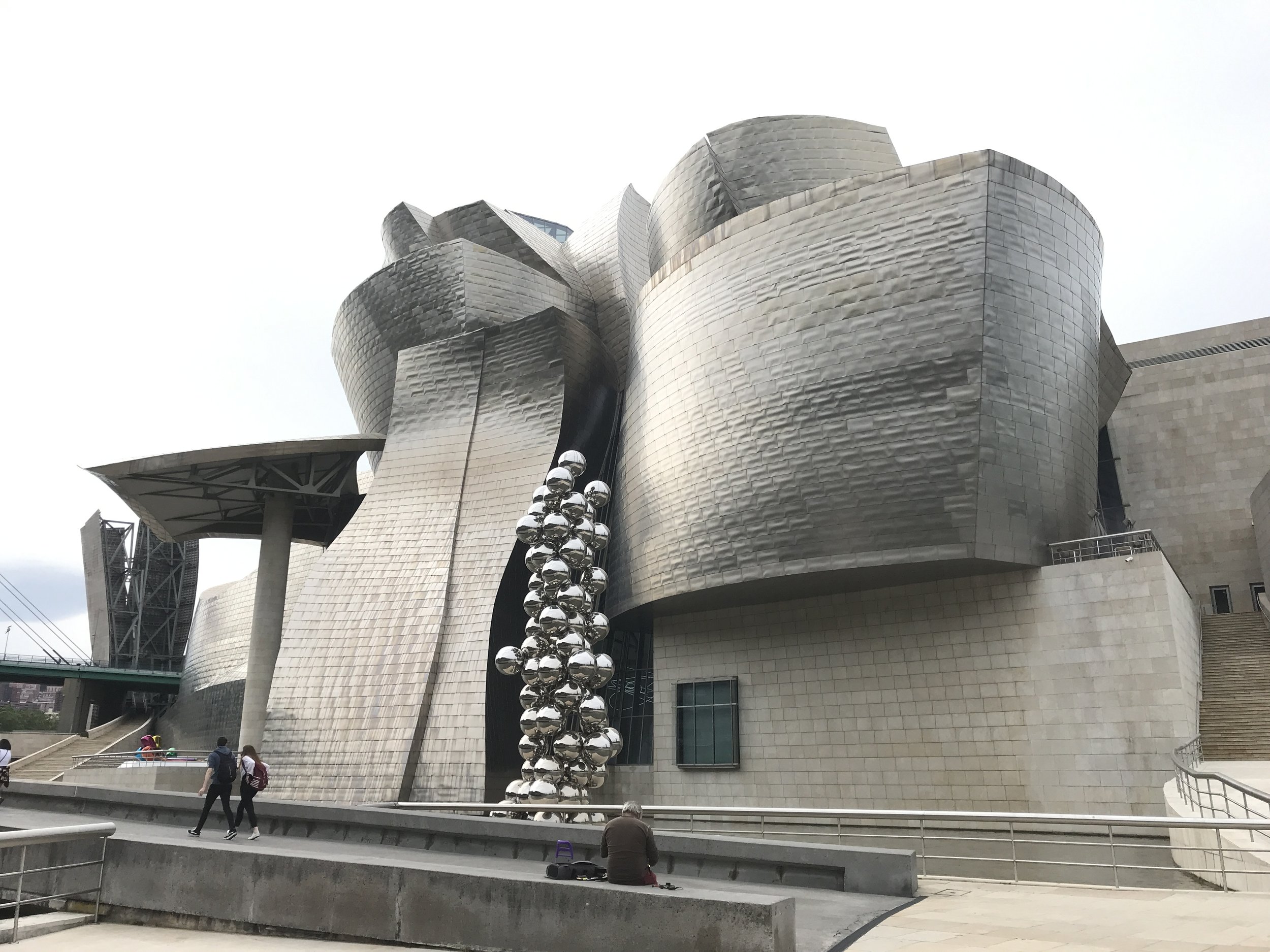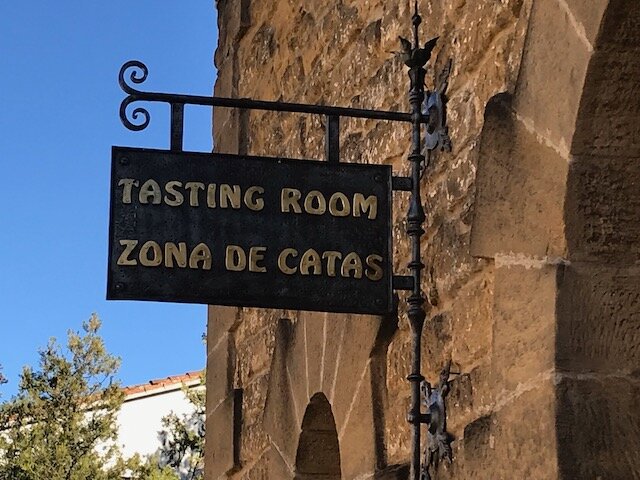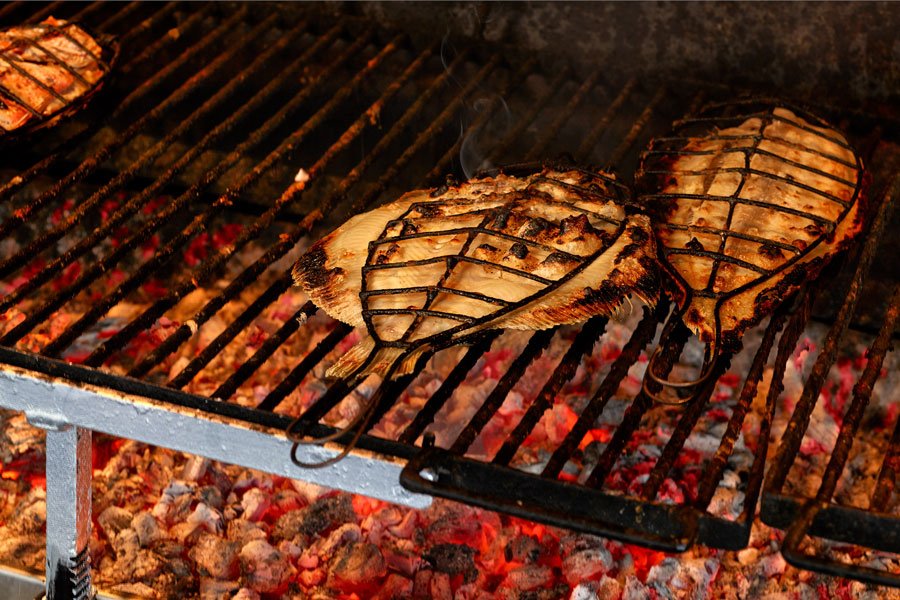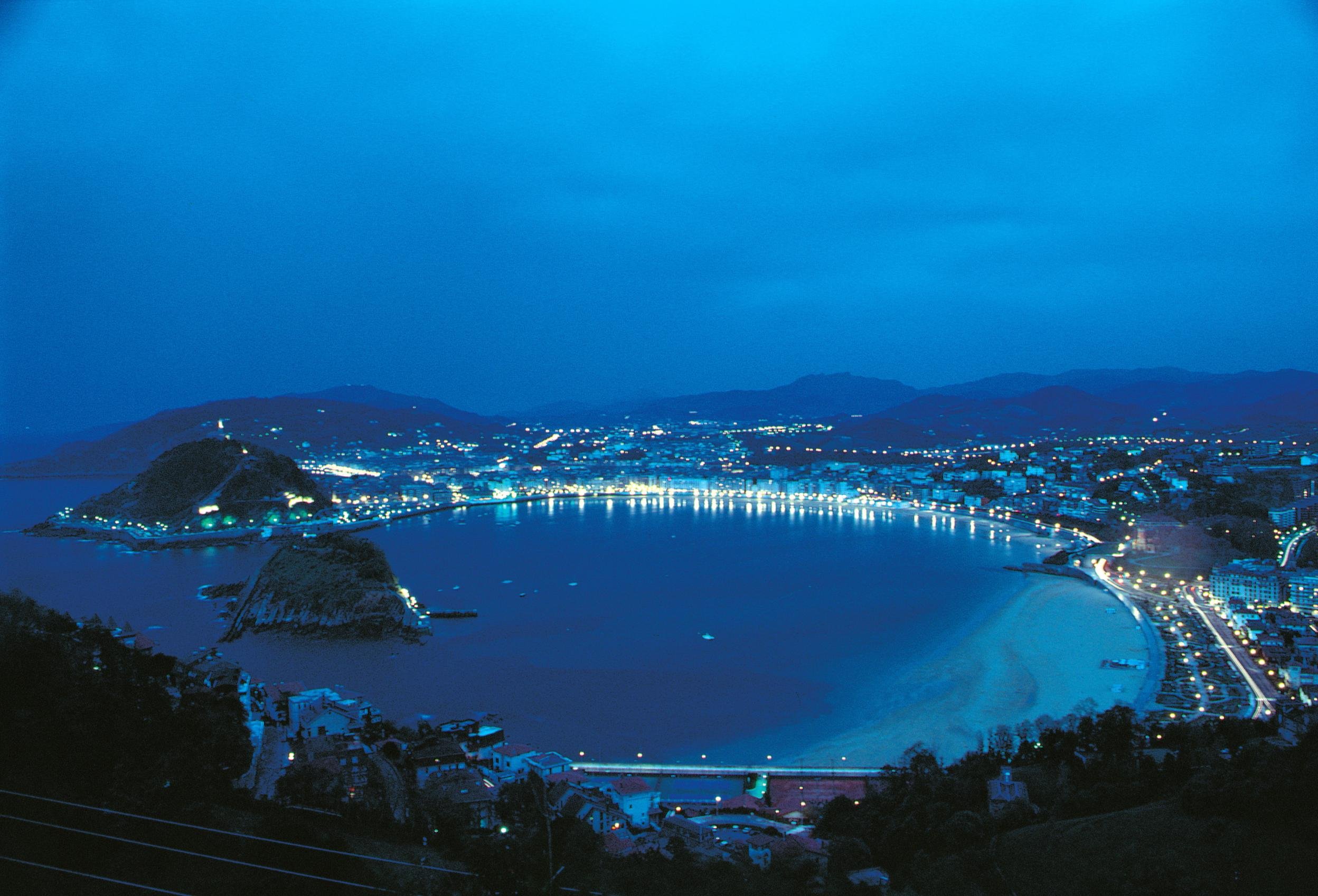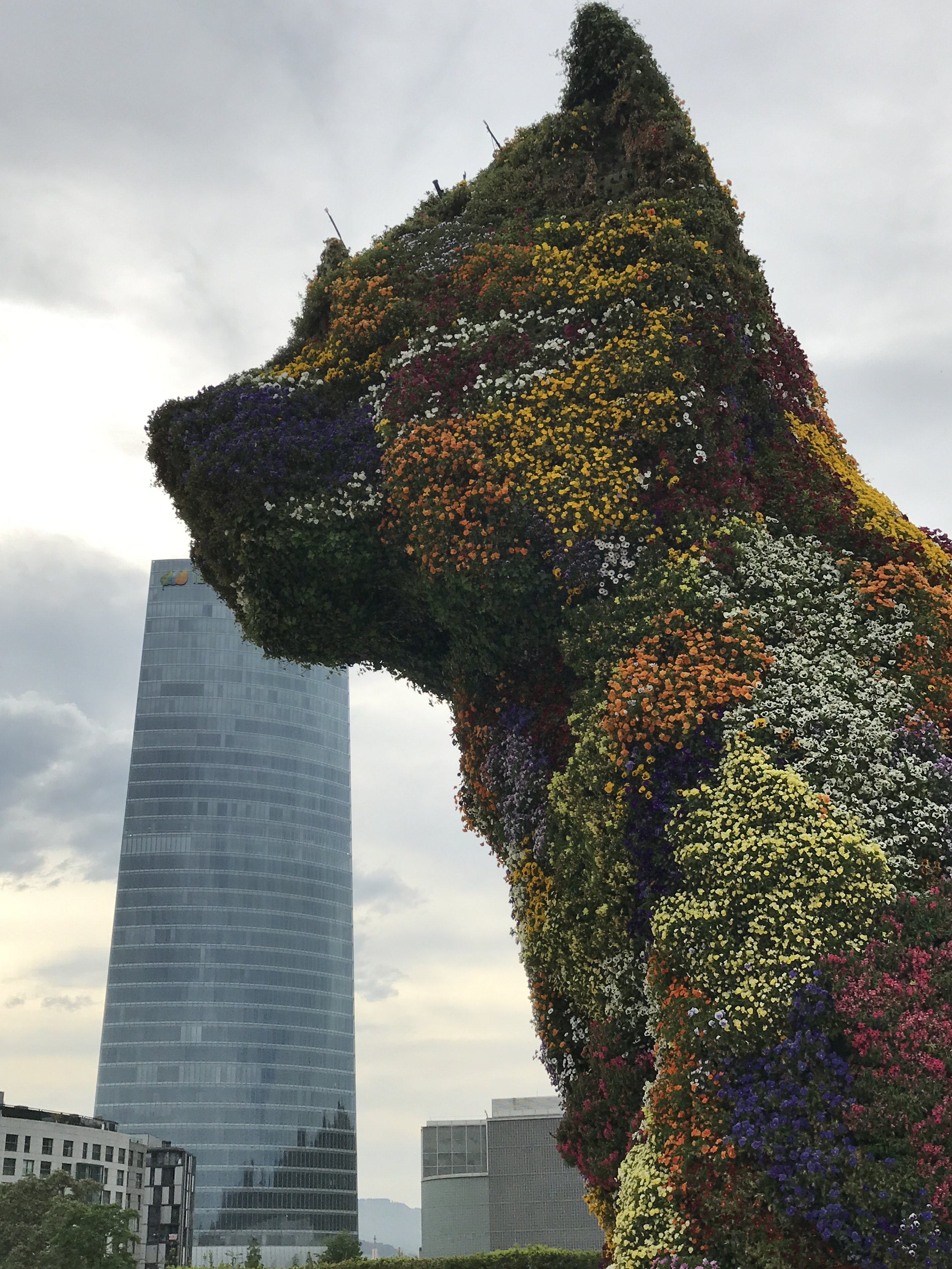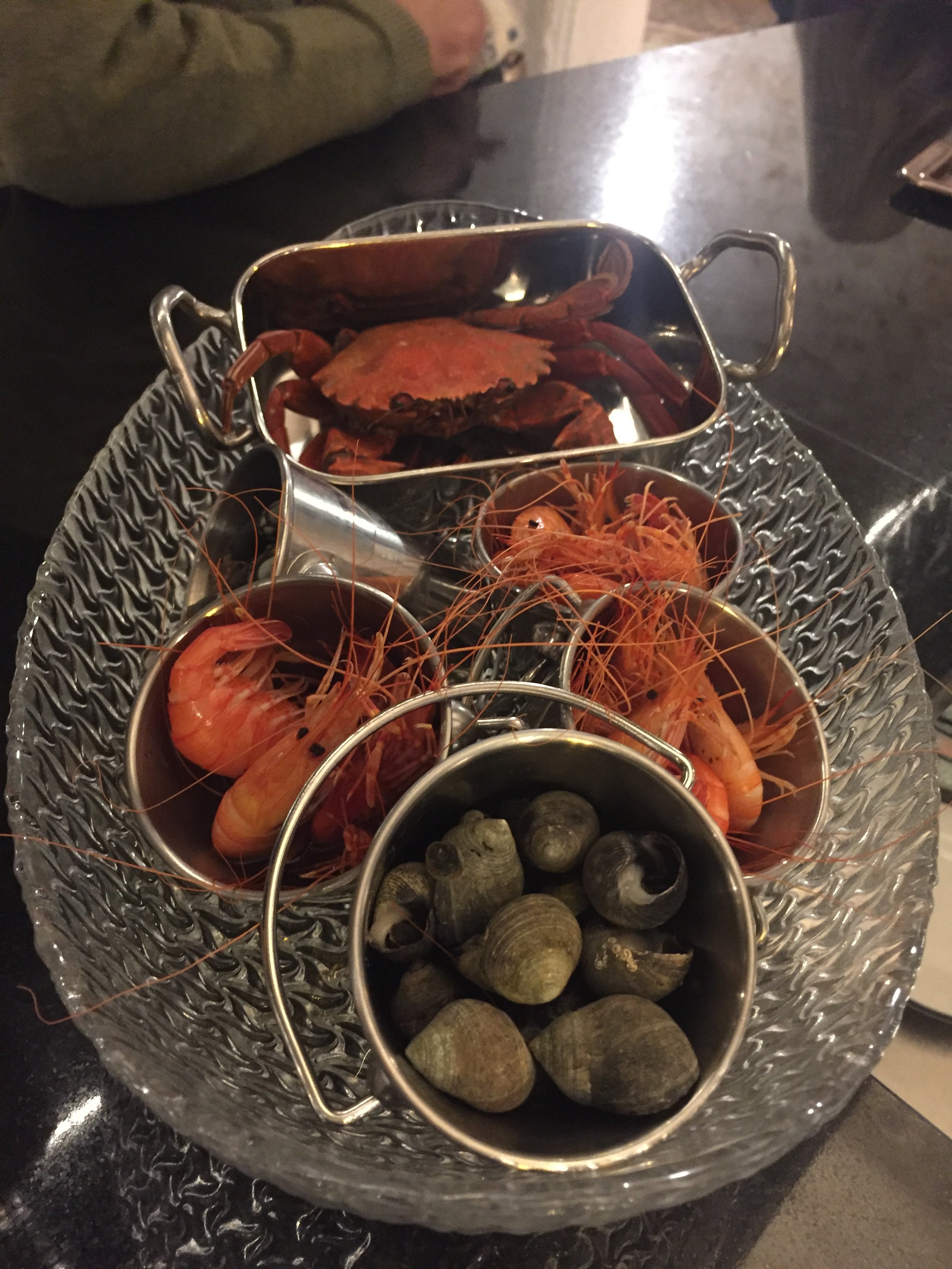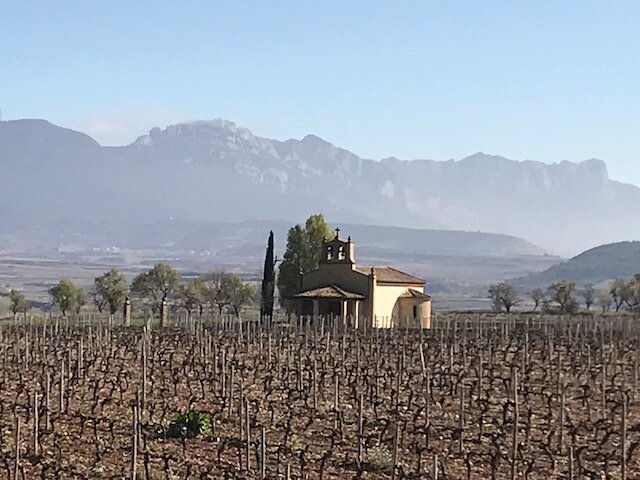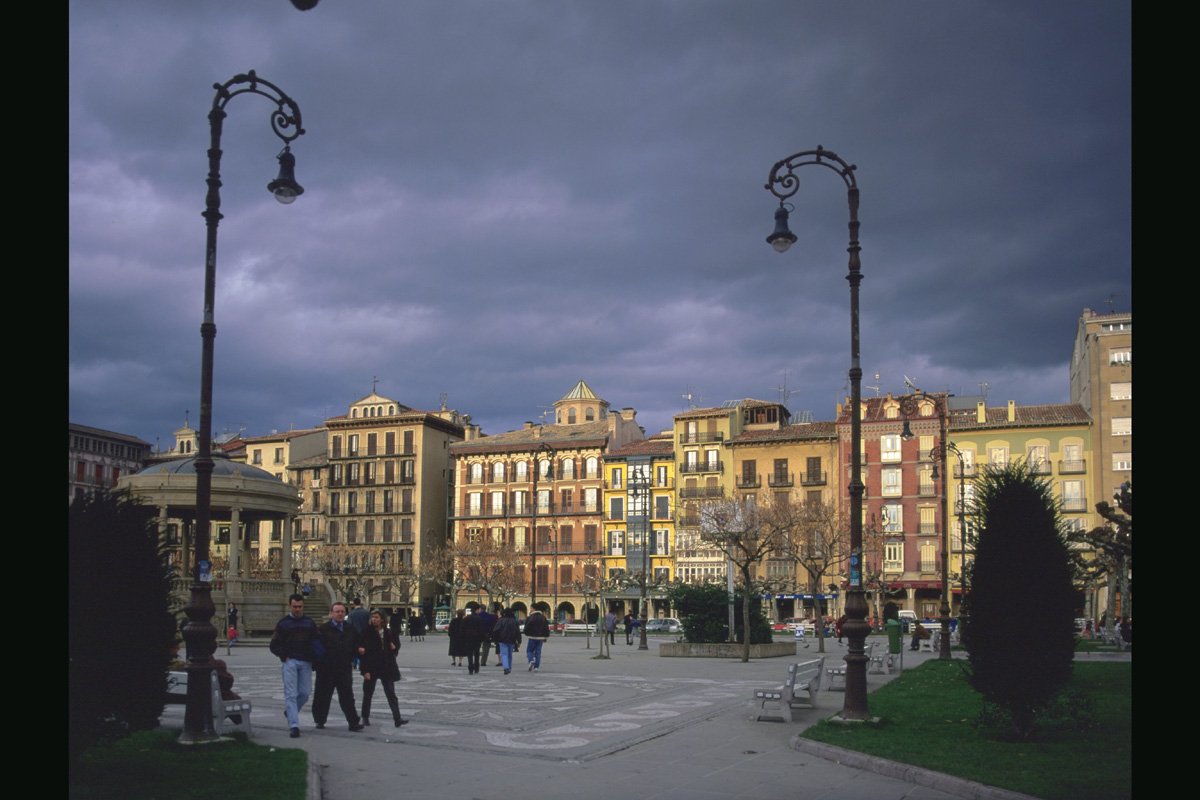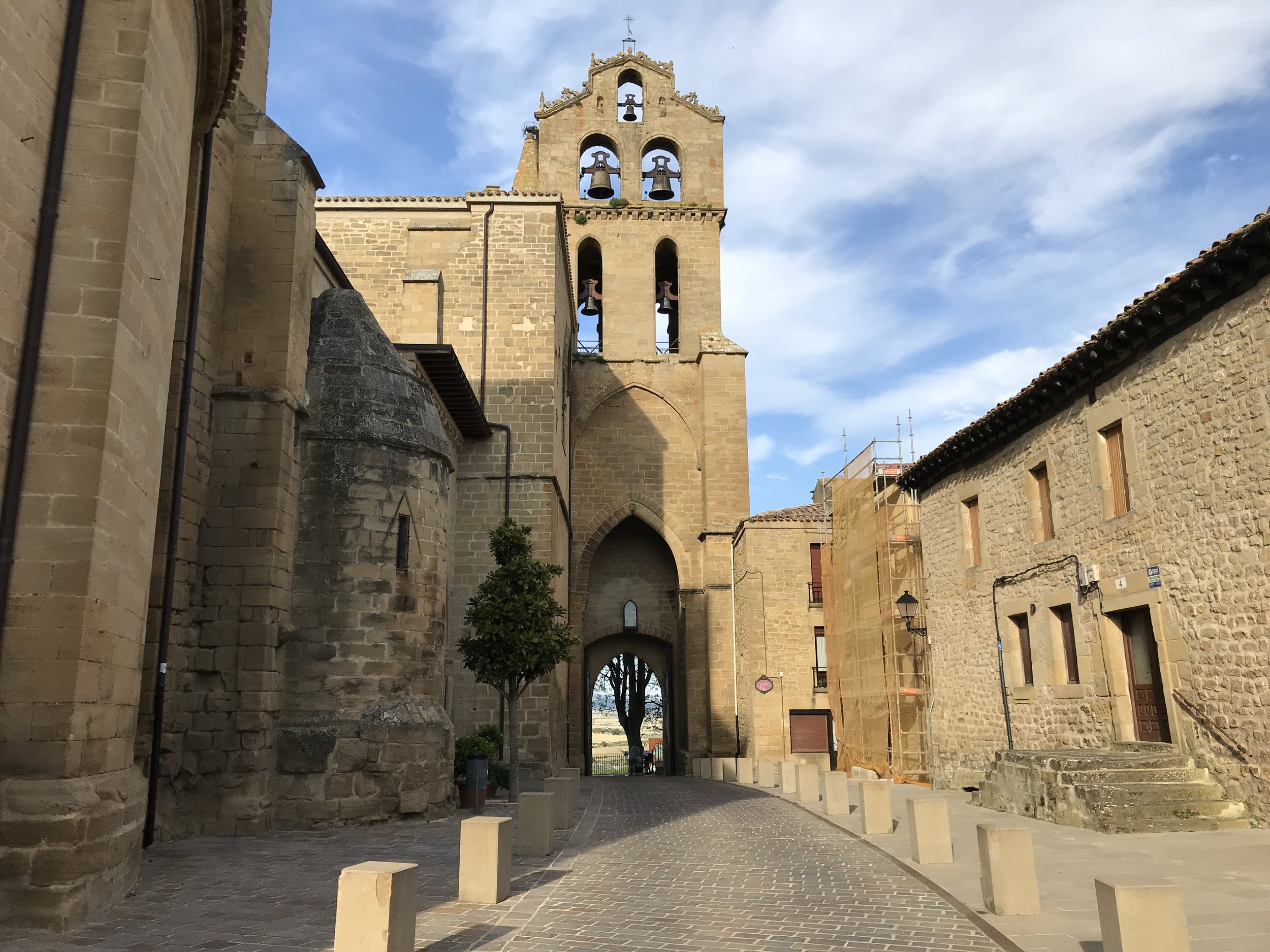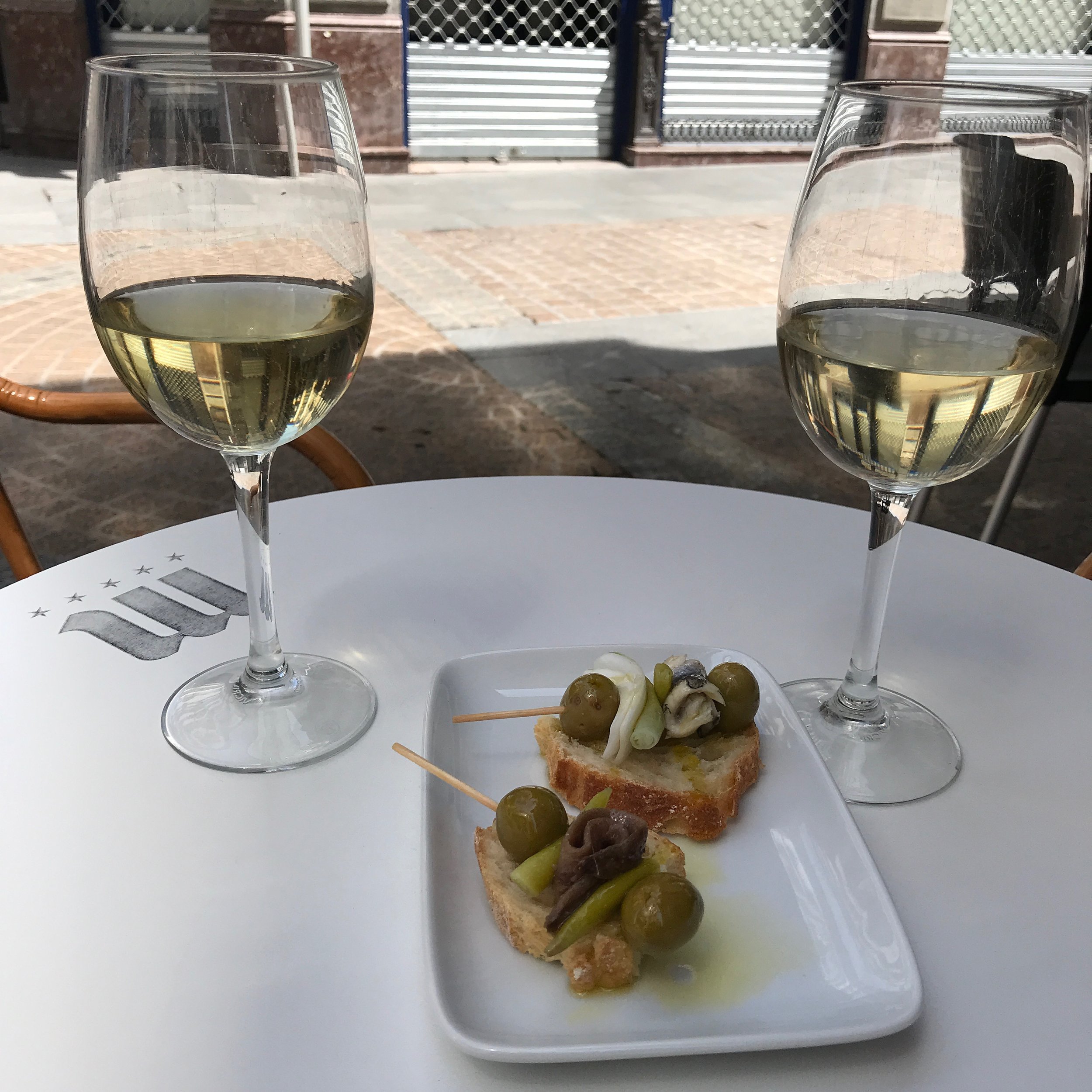Basque Food & Wine: San Sebastian, Bilbao & Rioja Trip
World-class wineries and cuisine in Spain’s rich North
Embark on a deep exploration of the food and wine of the Basque Country and Rioja. Start by exploring bustling Bilbao, the Basque Country’s largest city that in a few decades has gone from industrial grit to gleaming modernity through the redevelopment of the waterfront. You’ll visit the linchpin of the city’s transformation, the Frank Gehry-designed Guggenheim Museum. Then, head south to Spain’s premier wine region, Rioja, famous for its long-lived reds. Taste wines at some of the region’s most exciting producers, explore its picturesque villages, and immerse yourself in the traditional and avant-garde sides of Rioja’s delicious cuisine. The last leg of your journey will take you to San Sebastián, the seaside jewel home to many of the Basque Country’s best restaurants. Explore the city and the Basque countryside and coast while sampling the great and varied Basque cuisine.
Trip At A Glance
9 Days / 8 Nights
Days 1 - 2 in Bilbao
Start your trip in Bilbao, the largest city in the Basque Country. Here you’ll visit the Guggenheim Museum, symbol of the city’s renaissance, and dive headlong into Basque cuisine. At night, venture out to the city’s raucous pintxos bars that serve up local specialties with glasses of Txakolí and Rioja wine.
Days 3 - 5 in Rioja
Explore the food, wine and culture of Rioja, Spain’s premier wine region. You’ll discover wineries producing classic and innovative wines and taste the best of the region’s food from traditional dishes to fine dining elegance.
Days 6 - 8 in San Sebastián
End your trip in San Sebastián, where you’ll fully immerse yourself in Basque cuisine. From gourmet shops to seaside restaurants and modern Michelin star icons, San Sebastián will satisfy your taste buds. Enjoy the waterfront, the center, and the nearby village of Getaria, where you’ll also taste local white Txakolí wine.
On the blog: Terroir Restaurants in the Rioja
Basque Food & Wine: San Sebastian, Bilbao & Rioja Trip
Day 1 – Bilbao: Welcome to the Basque Country
Private transfer from the Bilbao airport to your hotel
Bilbao pintxos tour dinner
Overnight Bilbao
Basque Country
When it comes to food, the Basque Country seems to have it all. There are scores of Michelin Star restaurants, born from the Basque response to France’s nouvelle cuisine in the 1970s. The culture of culinary innovation has spread across Spain since then, but the Basque Country is still the heart of modern Spanish food. All of that creativity had to come from somewhere, though, and here it is the richness of ingredients and recipes. The Basque countryside offers wild-caught Atlantic fish, foraged mushrooms, dry-aged beef, sheep’s milk cheese, fresh vegetables, and artisan cider and Txakolí, the local white wine.
The quality ingredients are everywhere here, not just in the manicured dining rooms of haute cuisine restaurants. Pintxos bars (Basque tapas bars) compete to have the best and most creative inventions. Seaside restaurants serve the best grilled fish you’ll ever have, and in the hamlets of the countryside, simple recipes shine with the flavors of the hills. Food is so central to Basque life that many Basques, traditionally but no longer only men, form cooking clubs (txokos) where members use professional kitchens to cook for each other and their friends. Even economical midday menus in the cities will surprise you with the purity of flavor in their dishes.
You can eat all the Michelin star meals you could want in the Basque Country. But trust me, you won’t want many because the food everywhere you go is so good. I say eat like the Basques do: traditional food made with great products sourced and produced in Euskadi, in bars and restaurants and cooking clubs. Then you’ll understand what all the fuss has been about.
Bilbao
The Guggenheim Museum, erected on Bilbao’s redeveloped riverfront where shipbuilding instalations once stood, is the symbol of Bilbao’s success. While San Sebastián has deep connections to France, Bilbao is Basque and proud. Impeccable 19th-century construction from its glory days as the heart of Basque shipping sit next to the glimmering hotels, apartments, and corporate headquarters that remind you that you are in the economic center of the region. You’ll find pintxos here, as in San Sebastián, but with a more local feel. From decades-old eateries overlooking the city to creative cuisine at seafood-specialized Mina and Nerua restaurants, Bilbao is the perfect place to see and feel the identity of today’s Basque Country.
Bilbao Pintxos Tour Dinner
Bilbao is still under the radar in terms of the food on offer. Once you see the mix of authentic and modern pintxos bars in the plazas and on the narrow streets of the Old Town you will know you’ve “discovered” a secret. Head to Plaza Nueva with your private guide for a gourmet’s choice of pintxos bars where you order from the spread on the bars. You’ll be rubbing elbows with local Bilbao residents who love having pintxos and glasses of wine with friends.
Day 2 – Guggenheim & Basque Cuisine
Private Guggenheim Museum tour
Lunch at La Viña del Ensanche
Dinner at Mina
Overnight Bilbao
Private Guggenheim Museum Tour
Visit the Guggenheim Museum in Bilbao–the iconic building designed by Frank Gehry and responsible for Bilbao’s urban resurgence. Your private guide is an expert in the Guggenheim’s permanent collection and the exhibits.
Lunch at La Viña del Ensanche
La Viña del Ensanche is a much loved Bilbao institution, founded in 1927 and serving up tapas and plates of delicious Basque cuisine. The bar, with its traditional decoration and small marble-topped tables, has been expanded with a unique dining room where you can see and interact with the staff who are preparing your meal in an open kitchen. Dine à la carte or opt for a set menu which guarantees that you’ll try La Viña essentials. The wine list is focused on Rioja, with a great selection by the glass and a collection of top Spanish wines available by the bottle.
Dinner at Mina
Mina is the smallest Michelin star restaurant in Bilbao, in a beautifully decorated space overlooking the inlet that splits and centers the city. It’s no coincidence that Bilbao’s Ribera Market is visible across the water, for Mina is a restaurant dedicated to market cuisine in its purest form. The chef goes there daily to buy the best local products, building the ever-changing tasting menus around what is fresh and in season. Seafood is always a major presence at Mina, but the best of the Basque countryside is also on display. Whether you opt for one of the tables or the kitchen-facing bar, Mina is a singular experience. Each dish is pure distillation of the land and the sea of Bizkaia. A constantly changing menu demands a talented sommelier, and Mina delivers a fantastic wine experience with a special focus on small producers. Whether you opt for the wine pairing or explore the extensive wine list, you’ll find plenty of exciting wines and unique pairings.
Day 3 – Welcome to Rioja
Transfer to the Rioja wine region
Gomez Cruzado wine tasting
Finca La Emperatriz winery visit
Lunch at Echaurren Tradición
Overnight Rioja
Rioja
Rioja feels a world apart from the nearby Basque Country. The towns and villages are dominated by ancient castles, churches and monasteries, but most of all by wineries. Vineyards are everywhere, but the wineries have always been in town in the Rioja. In honorary wine capital Haro, the Station Quarter is full of them, their famous names and tasting rooms beckoning.
The mountains protecting Rioja to the north and the south make this region a wine sanctuary. Great wine is everywhere: at the pintxos bars of Haro and Logroño, the traditional restaurants in Laguardia and Casalarreina, and the cavernous cellars of Michelin-star restaurants. The food ranges from rustic to refined, but is consistently local, seasonal, and high-quality.
Above all, Rioja is beautiful. Perfectly preserved medieval villages, rolling hills covered in vines whose leaves paint them in jewel tones every fall, sprawling old wineries full of ancient barrels next to psychedelic new complexes. You could come here just to look at it all, but thankfully the wine is as spectacular and diverse as the country itself.
The Wines of Rioja
There is a well-established style of classic Rioja: savory, age-worthy reds dominated by Tempranillo but nearly always with small amounts of Graciano, Mazuelo, Garnacha, or even white Viura. These wines eschew single plots, instead opting to blend vineyards and even bring specific varieties from far-flung corners of the Rioja. Old American oak is often preferred to French. Many Riojas carry age certifications instead of varieties or vineyards. Crianzas are entry-level barrel-aged wines that can be very serious and great value. Reservas must have more bottle-aging than crianzas, and often age longer in oak as well. The reserva category includes some of the greatest wines in Rioja, for more is not always better when it comes to oak. Finally, the gran reservas spend at least two years in oak, often much, much more. These are the top of the classic categories, and many producers reserve their best plots for gran reservas and only produce them in exceptional vintages. Most classic Riojas can age for years, but gran reservas are built for the long haul, and the best examples will likely outlive the winemaker and the buyer.
Many quality Rioja producers have moved away from this aging-based system or changed their methods to produce a different sort of wine. Starting in the 1990s, French oak, often new, became popular among the top winemakers in Rioja. Producers like Remírez de Ganuza, Artadi, and Contador showed that French oak can make Riojas that match or even surpass those made in the old way. Single-plot wines have risen with the fortunes of new producers, many of them varietal wines of Tempranillo. New regulations allowing subregion and village labelling have firmly split Rioja producers: some have stuck with the old ways, while others have done their best Burgundy impression, producing separate wines from each distinct plot and aiming for pure terroir expression rather than consistent blends. The good news for wine lovers is that Rioja now has more diversity of fine reds than at any time in recent memory.
No wine region in Spain stands still these days, and Rioja has its own rebels and innovators pushing the boundaries. Small producers have found plots of old vines all over the Rioja, from the foot of the mountains in the Northwest to Rioja Oriental in the far east. These often contain field blends, and some producers are even taking advantage of quality Graciano, Mazuelo, and Garnacha vineyards to make varietal wines. In garage wineries you’ll see French oak, but also massive oak foudres, cement vats and amphoras. In Rioja Alavesa producers are returning to the tradition of carbonic maceration of whole bunches, the Riojan version of Beaujolais nouveau. Clarete can even be found, a full-bodied rosé style made from a blend of red and white grapes. Innovation is all around, and should continue to bring great new wines onto the market in the years to come.
Rioja means red to many people, but white Rioja is far from an afterthought. There is a classic style of white Rioja that once had many examples but today is mostly synonymous with one name: Viña Tondonia. Stubbornly traditional producer López de Heredia ages this white wine for years in American oak and years more in bottle before release: the Gran Reserva release can be over 20 years old before it appears on shelves. This kind of white Rioja is a strong contender for the most age-worthy dry white wine in the world: bottles over 40 years old can be not only drinkable, but still feel young!
Viura, the main white Rioja grape, can produce wonderfully subtle wines when treated with care. Many wineries new and old have begun to focus on white wines as well-made examples have led the way. Some are made to be drunk young, while others follow the footsteps of Tondonia and age for years. Other grapes are appearing as well, with Garnacha Blanca, Malvasia, and recent mutation Tempranillo Blanco showing up in blends and varietal wines. One small producer makes no fewer than six different white Riojas! This is a category to watch.
Gómez Cruzado Wine Tasting
Gómez Cruzado is the most innovative producer in Haro’s Station Quarter, home to Rioja’s traditional stalwarts. It’s an old winery with new ideas, making all of its wines in a tiny building down the street from Rioja giants Rioja Alta, Muga and López de Heredia. It makes classic Riojas blending Tempranillo, Garnacha, and other grapes from the best vineyards in Rioja, but Gómez Cruzado’s cult status comes from its premium terroir-focused wines. The white Montes Obarenes blends usual and unusual white grapes into one of the most acclaimed white Riojas on the market. Cerro Las Cuevas is sourced from old vines planted with a classic Riojan blend, but ages in large foudres for a fresher profile that showcases the vineyard. Finally, Pancrudo is one of the wines that put Rioja Garnacha on the map. This expressive, fragrant single vineyard red enchants enthusiasts and critics alike, and has become one of Rioja’s cult wines.
Finca La Emperatriz Winery Visit
Finca La Emperatriz is a singular estate in the cool, western corner of Rioja, a sort of Riojan chateau. The property once belonged to the wife of Napoleon III, the last empress of France, from which it gets its name. Today it’s known for producing a handful of exceptional white and red Riojas exclusively from the plots surrounding the winery. Old vines, chalky soils, and the cooling influence of the nearby mountains make Finca La Emperatriz’s wines exceptionally elegant.
Visit the property, including the chateau and the estate vineyards, before tasting Finca La Emperatriz’s finest wines.
Lunch at Echaurren Tradición
Francis Paniego has two Michelin stars at his restaurant El Portal de Echaurren, but his heart may be in Echaurren Tradición, the traditional restaurant just down the hall. Here Paniego’s mother’s recipes (she herself was a culinary legend) shine with the technical excellence of the Echaurren team. Riojan classics come alive here, from croquetas and hearty stews to fish dishes with perfect sauces and offal for the adventurous. There’s no better place to taste traditional Riojan cuisine at its best. Don’t neglect the wine list, full of rare and undiscovered bottlings from Rioja and beyond.
Day 4 – Rioja Alta Terroir
Valenciso winery visit
Teodoro Ruiz Monge winery visit
Lunch at Héctor Oribe
Overnight Hotel Santa María Briones, Rioja
Valenciso Winery Visit
Valenciso brings together the experience of its husband-and-wife owners to produce modern Riojas with a classic soul. Valenciso sources grapes from cool vineyards and uses cement for fermentation and some aging to make wines with freshness and elegance not common in classic Riojas. Each wine is a pure expression of vineyard and winemaking. The red Reserva brings together long aging with a subtlety and expressiveness that sets it apart from most other Rioja Reservas. 10 Años Después takes fine red Rioja in a unique direction by aging Tempranillo in cement for a decade before bottling, preserving fruit in the wine while giving it incredible smoothness and complexity. The varietal Graciano is made in tiny quantities and aged in Caucasian oak, while the white and rosé are each among the finest examples of their kind being made today in Rioja. Valenciso keeps the innovative spirit that has made Rioja great alive while keeping one eye on the past.
Teodoro Ruiz Monge Winery Visit
Bodegas Teodoro Ruiz Monge represents both the old and the new of Rioja in one family. The family has been growing grapes since 1870 around the village of San Vicente de la Sonsierra. They were cosecheros (harvesters), making wine in large cement vats to sell to the large bodegas, a tradition that remains alive in the area, albeit often with cooperatives as intermediaries. Teodoro took a leap of faith and began bottling carbonic maceration red wine in the 1970s, a drastic step at a time when the power of large wineries was immense. Today, his son has expanded the winery with a whole range of single-plot wines which combine his faith in carbonic maceration and his family’s old vines with restrained barrel aging and careful winemaking. The traditional fermentation in cement with whole bunches yields wines with sincere fruit expression, while careful vineyard management and winemaking guarantee complex, ageworthy wines. Teodoro and his family have also restored their family aging cave underneath the San Vicente Castle, an enchanting historic space which opens up to a view over the surrounding countryside.
Lunch at Héctor Oribe
The only restaurant in the tiny village of Páganos, Héctor Oribe is a hidden gem. Chef Héctor and his wife run this charming and comfortable little restaurant, where Héctor puts his own surprising twists on traditional Riojan and Basque ingredients and dishes. Héctor previously worked at three Michelin star Arzak in San Sebastián, so his technique is always impeccable. The wine list features many wines from Rioja, and this is an especially good place to discover small producers whose wines are unknown outside of the region.
Day 5 – Basque Rioja
Vivanco wine museum visit
Pujanza winery visit
Lunch at Amelibia
Laguardia visit
Remirez de Ganuza wine tasting
Dinner at Nublo
Overnight Rioja
Vivanco Wine Museum Visit
The Vivanco family made a fortune in the wine business in Rioja, and spent part of it accumulating the most impressive collection of wine-related art and artifacts imaginable. Today this collection forms the basis for the Vivanco Museum of Wine Culture just outside the village of Briones. The museum showcases every aspect of wine, from vineyard work and winemaking to consumption and appreciation, through historical and modern examples and excellent multimedia explanations. The collection of art related to wine, spanning thousands of years of wine history, could be a museum in itself, but the most surprising part of the museum comes at the end: the largest collection of corkscrews you can imagine, of all shapes and sizes and ages. The Vivanco Museum is a must-see in Rioja.
Pujanza Winery Visit
Bodegas Pujanza has a different vision of modern Rioja wines, focused on freshness and looking to express the caliber of the vineyards found at the base of the vertical slopes of the Sierra Cantabria Mountains. Founder and winemaker Carlos San Pedro comes from a multigenerational winemaking family, and at the turn of the millennium set out on his own. Since then, his wines have acquired a legendary status. The first wine he released, known today as Finca Valdepoleo, comes from a beautiful vineyard surrounding the winery itself and exposed to extreme temperature changes and cold winds from the mountains. Pujanza Norte lies higher, facing north, fully exposed to the mountains. It’s a wine full of vibrancy and freshness atypical in Rioja reds. A single plot of old vines yields the much-acclaimed Cisma, but perhaps the most revered among lovers of Spanish wines is Pujanza Añadas Frías, a white made only in cold vintages that brings a minerality and purity to the Viura grape few would imagine it capable of. Luckily, when the vintage is not as cool, a white is still made from the same single vineyard under the name S.J. Anteportalina. Pujanza is one of the great new wineries of the Rioja offering a different take on what the region’s finest wines can express.
Lunch at Amelibia
A beautiful little family-run restaurant in Laguardia, Amelibia serves updated, seasonal selections of Riojan cuisine. You can order à la carte, but the best option is to do the tasting menu, a selection of eight seasonal dishes which will guarantee you come away with a great experience and a perspective on the richness of products in the area. The wine list is carefully curated, featuring many small and fantastic producers from Laguardia and the wider Rioja alongside wines from around the world. The wine service is superb, so feel free to leave yourself in the hands of the warm staff when it comes to wine. The dining room has excellent views over the countryside around Laguardia.
Laguardia Visit
Explore the old town of the beautiful hilltop village of Laguardia with your guide. The village is home to a number of preserved medieval buildings, and its narrow streets transport the visitor back in time. The views over the surrounding countryside, which is home to some of Rioja’s best vineyards, are stunning.
Remírez de Ganuza Winery Tasting
Your local food and wine specialist guide will pick you up at the hotel for a private lunch in San Sebastian. Go to the market to buy the ingredients for your lunch. Seafood will likely figure on the menu as it is plentiful and fresh in San Sebastian. You will walk to the Old Town for hands-on cooking at a traditional Basque cooking club, or txoko.
Dinner at Nublo
Nublo is the brainchild of two Michelin-starred Mugaritz Restaurant alumni who came to the center of Haro to bring out the best in Rioja’s products and dishes. The restaurant occupies an impeccably restored palace in Haro’s old part. All of the cooking is done using wood, whether in the wood oven, on the grill, or on the traditional Basque wood-powered stove. Expect a tasting menu that highlights seasonal Riojan products alongside excellent fish and seafood sourced from the waters of the nearby Basque coast. To accompany the pure flavors of the menu, Nublo boasts a cellar packed with wines from Rioja and around Spain, where you’ll find classic bottles alongside rarities from talented growers. The restaurant’s opening in Haro in 2021 made an immediate impact, so much so that in less than six months Nublo earned a Michelin star.
Day 6 – Elegant San Sebastian
Private transfer from Rioja to San Sebastian
Dinner at Rekondo
Overnight San Sebastian
Dinner at Rekondo
Rekondo is an institution in San Sebastián, a mandatory visit for food and wine lovers, equally respected for its elegant Basque cuisine as for its world-class wine cellar. You can dine on the best products from the sea and the Basque countryside, from fresh shellfish to grilled fish and meats, all prepared and presented impeccably.
The wine cellar is what Rekondo is truly famous for. Over one hundred thousand bottles collected by owner Txomín over decades make up one of Wine Spectator’s five best cellars in the world. The finest wines of Spain are present in all their forms, from the latest bottlings of young growers to bottles with decades of aging from the country’s most famous names like Vega Sicilia, Artadi and López de Heredia. Many of the bottles in the cellar are unavailable anywhere else in the world, and are offered at reasonable prices. For lovers of wines from around the world, there’s an extensive collection of fine wines from every corner of the world, including a particularly complete Mouton Rothschild vertical. Whatever your taste, Rekondo is a wine temple worth visiting.
Day 7 – Seaside Getaria: Wine & Seafood
Zumaia visit
Txakoli winery visit
Lunch at Kaia Kaipe
Dinner at Ganbara
Overnight San Sebastian
Visit Zumaia
See the stunning village of Zumaia between San Sebastián and Getaria. It’s a pretty Basque fishing town in one of the most beautiful parts of the Basque coastline. The old town has a number of interesting buildings, while the coastline is home to steep cliffs and otherworldly flysch rock formations.
Txakoli Winery Visit
Txakoli is the traditional wine of the Basque coast, best known as a refreshing light white with a little sparkle but capable of much more in its best examples. Txakoli was traditionally made at home using native grapes Hondarrabi Zuri and Hondarrabi Beltza. Modern winemaking has improved the quality of Txakoli, enabling its rise across Spain and around the world, particularly in the United States. Red, rosé, and fully sparkling txakolis have joined whites across the Basque Country, but Getaria remains the heart of Txakoli production with its vineyards planted on verdant hills overlooking the Cantabrian Sea. Visiting one of these stunning wineries before a seafood lunch at one of Getaria’s world-class restaurants is an essential experience.
Lunch at Kaia Kaipe Restaurant
On the waterfront of the fishing village of Getaria lies Kaia Kaipe, legendary seafood restaurant and temple to the Basque grilling tradition. Fresh-caught specialties like sea bream and turbot are grilled to perfection before your eyes to create the pinnacle of classic Basque cuisine. You’ll find a menu stuffed with other delicacies as well; top-quality shellfish is an exceptional choice. The wine cellar contains over 40,000 bottles of over 1,000 different wines from every corner of Spain and the world. You’ll find the greatest wines of Spain here, including old vintages dating back decades, some from producers that no longer exist. Kaia Kaipe is widely considered one of the best restaurants in Spain, and for good reason.
Dinner at Ganbara
Ganbara is a San Sebastián institution that combines one of the city’s best selections of pintxos with a restaurant menu of seasonal Basque market cuisine. Family owned and operated, Ganbara is a favorite among Basque chefs for its excellent product and comfortable environment. Find a spot at the bar or grab a table and take in the delicious pintxos piled high on the bar. You can enjoy the best of the surrounding countryside and the Cantabrian Sea, from wild mushrooms and Basque txuleta steak to shrimp, shellfish, and fresh grilled fish. The cozy environment and warm service make Ganbara a place to come to again and again. Don’t miss the wine list combining classic Rioja wines with artisan wines from creative producers in Spain and beyond.
Day 8 – Basque Cuisine In Depth
Private gastronomic club lunch
Dinner at Akelarre
Overnight San Sebastián
Private Gastronomic Club Lunch in San Sebastián
Your local food and wine specialist guide will pick you up at the hotel for a private lunch in San Sebastian. Go to the market to buy the ingredients for your lunch. Seafood will likely figure on the menu as it is plentiful and fresh in San Sebastian. Then it’s on to a private gastronomic club where your guide is a member. Here you’ll get to enjoy the products you bought, some of which are ready to eat and some of which will be cooked while you enjoy local wine, talk and relax. A true Basque lunch in the region’s most authentic food and wine environment.
Dinner at Akelarre
Chef Pedro Subijana of Akelarre is responsible, along with Chef Juan Mari Arzak of Arzak and Chef Martín Berasategui of Martín Berasategui, for the renaissance and modernization of Basque cuisine following in the footsteps of the French Nouvelle Cuisine chefs in the 1970s. Today, Akelarre boast three Michelin stars and a spectacular location overlooking the Bay of Biscay. The tasting menus offer a chance to try Subijana’s latest innovations alongside classics from the restaurant’s decades of greatness. Needless to say, you’ll also find one of Spain’s best teams of sommeliers here backed by a wine cellar filled with extraordinary and rare wines.
Day 9 – Departure
Private transfer to the San Sebastián or Bilbao airport for departure.
Bilbao & Rioja Wine Tour
Trip Information
Hotel
Bilbao - 2 nights
Hotel Miro - Modern 4-star hotel across the street from the Guggenheim Museum. Rooms offer stunning views of the Guggenheim. Great service and easy access to visits and dining options in the center of Bilbao.
Rioja - 3 nights
Hotel Santa María Briones - Luxurious hotel in a beautifully restored palace in the heart of the hilltop town of Briones. Each room and public space has been furnished to highlight the historic building’s features while bringing modern comfort. The new vision of luxury in Rioja.
San Sebastián - 3 nights
Nobu Hotel San Sebastian - One of the latest additions to San Sebastian’s luxury hotel scene, the Basque outpost of Nobu’s hotel and restaurant empire occupies a turn of the century mansion right on La Concha beach. All of the luxuriously furnished rooms offer view of the ocean, and the hotel’s location offers easy access to the best of the city. The on-site Nobu restaurant serves the chef’s legendary dishes for something different in the Basque food capital.
Trip Includes
8 nights hotel, double occupancy
breakfast daily in the hotel
5 lunches with wine
pintxos tour dinner with wine
expert private guides
private premium wine tasting
private transportation for wine touring
restaurant reservations and recommendations
full trip planning
in-country trip assistance and on-the-ground support
Epicurean Ways expertise
Not Included
flights to/from Spain and flights within Spain
tips to guides and drivers (optional but appreciated)
travel insurance (recommended)
extra charges in hotels (minibar, room service, etc)
A note on restaurant selections and hotels
All tours, experiences and hotels are subject to availability and will be confirmed upon booking the trip.
We include restaurant concierge service as part of your trip. Note that our restaurant suggestions are just that–suggestions. Places we love, places to go back to time after time. We recommend these places after years of experience eating in Spain and Portugal together with frequent research and input from our local partners. We aspire to guide your choices with information on the styles of cuisine and restaurants; the choice on where to eat is yours based on your preferences and desires.
We have included hotel options ranging from 5-star luxury properties to small boutique hotels. Let us know your preferences and we will tailor the hotel choices for you.
Trip Prices
Note that we can customize this trip for you. Add days in your arrival or departure city or in other locations or make changes to the experiences, winery visits, restaurants, or hotels included in the trip. Whatever it is, we’re here to work with you. Once you’re happy with the trip plan and have some idea of your dates we will calculate and send you the price.


